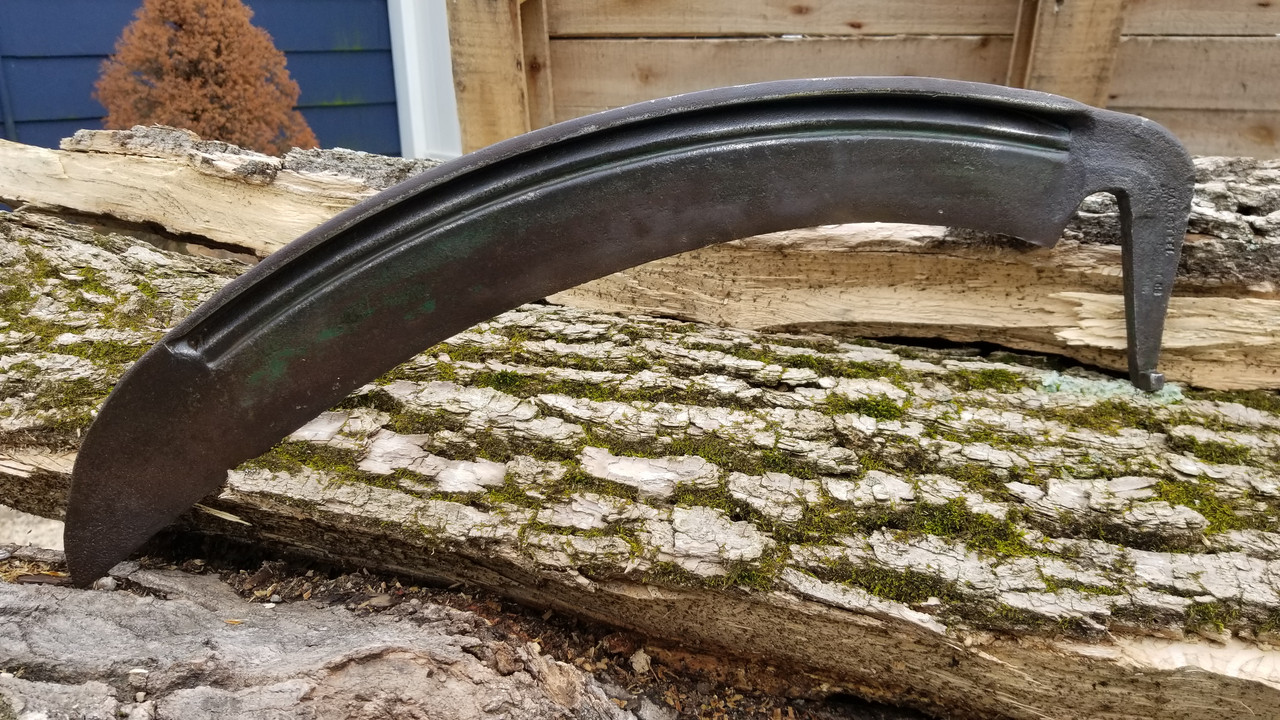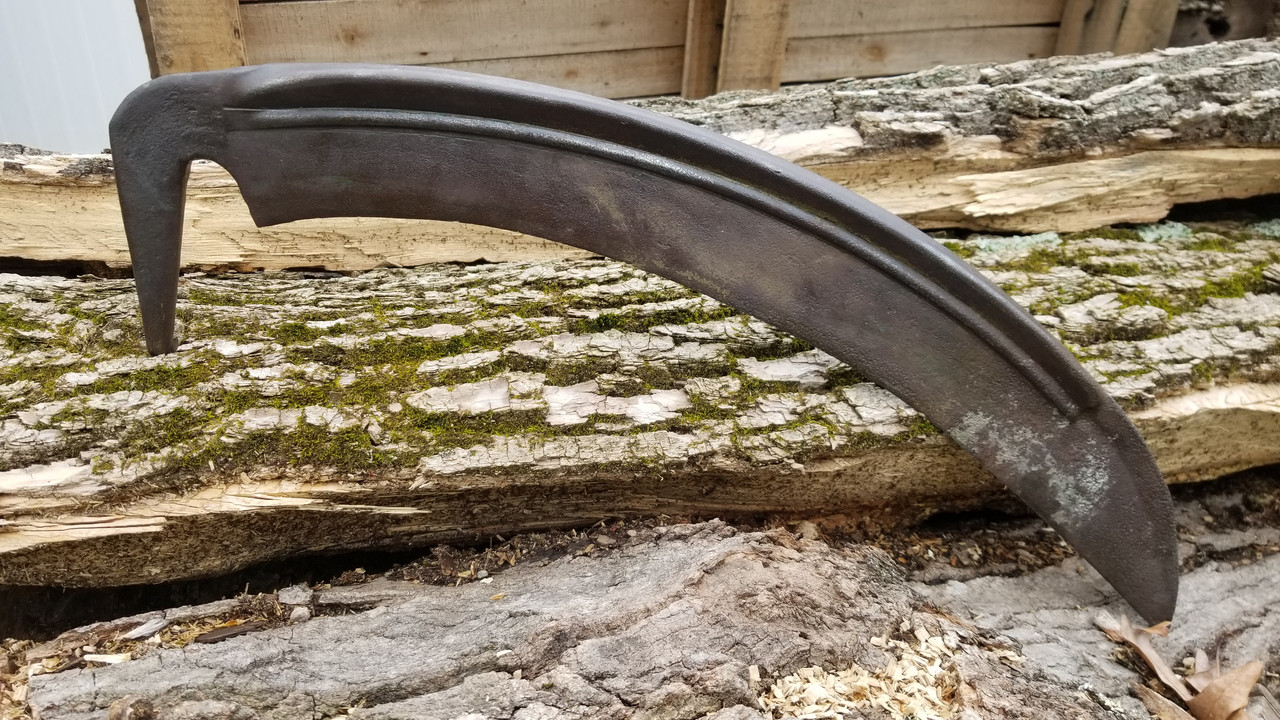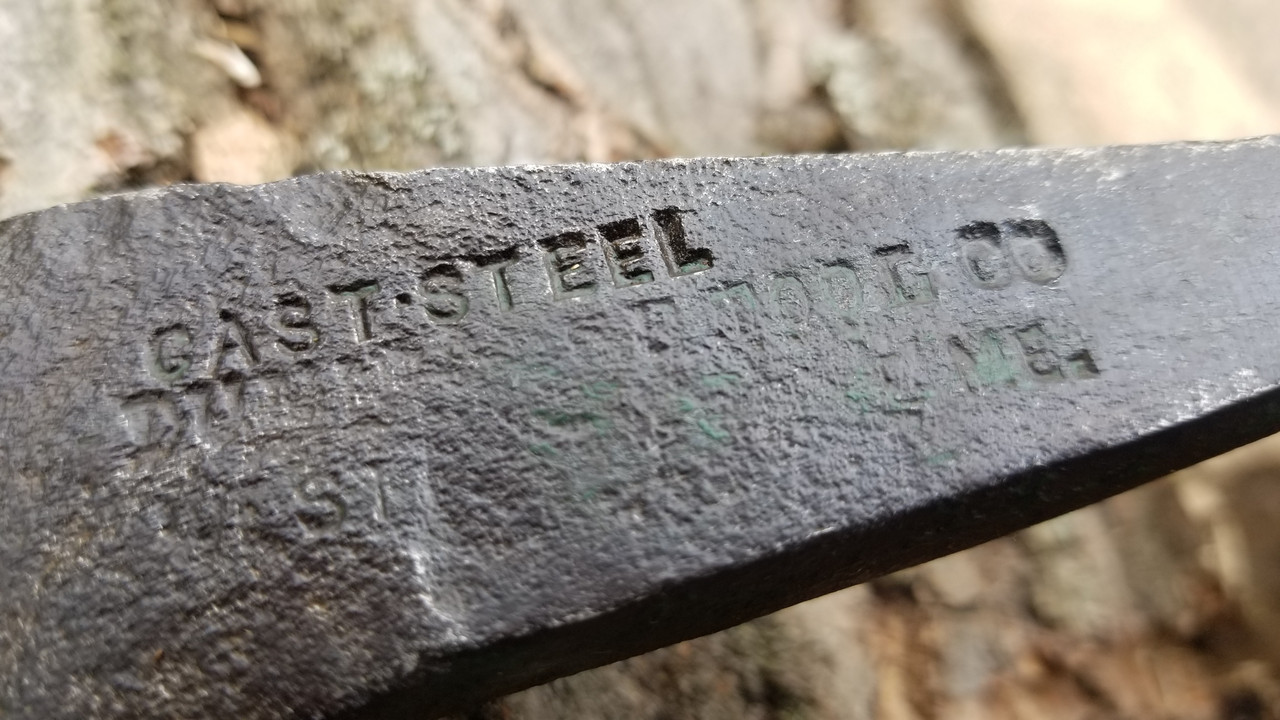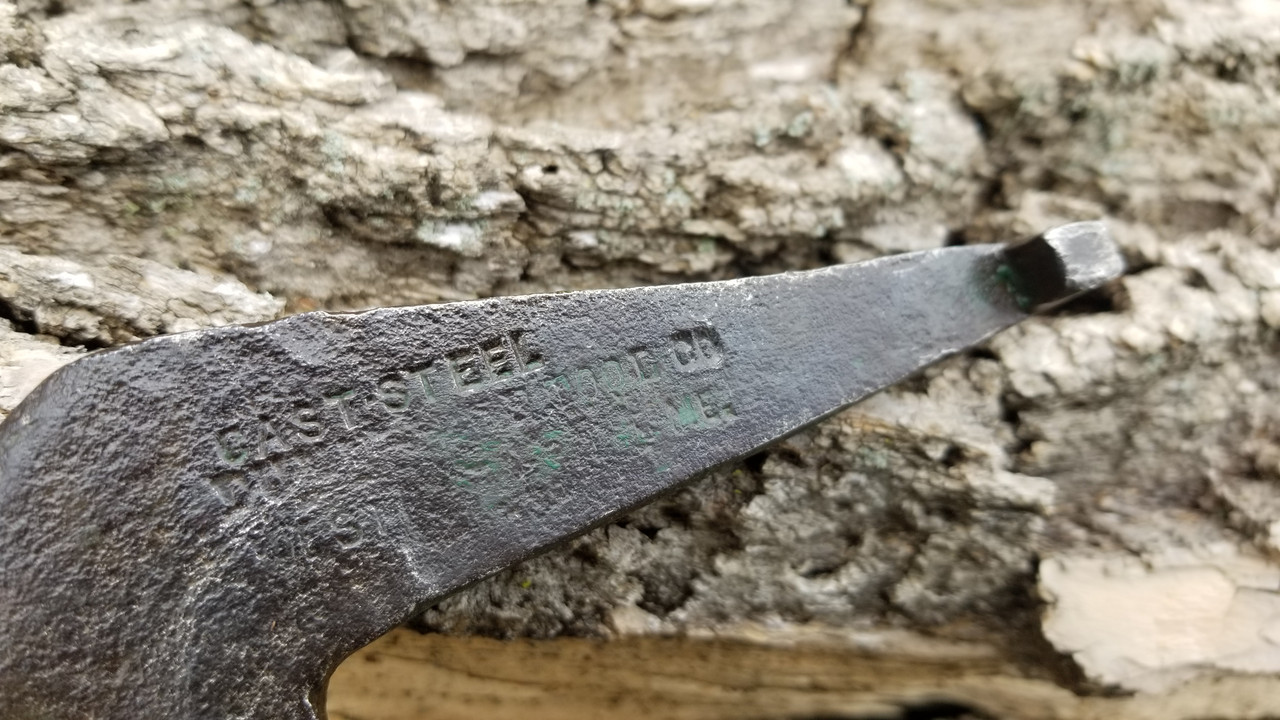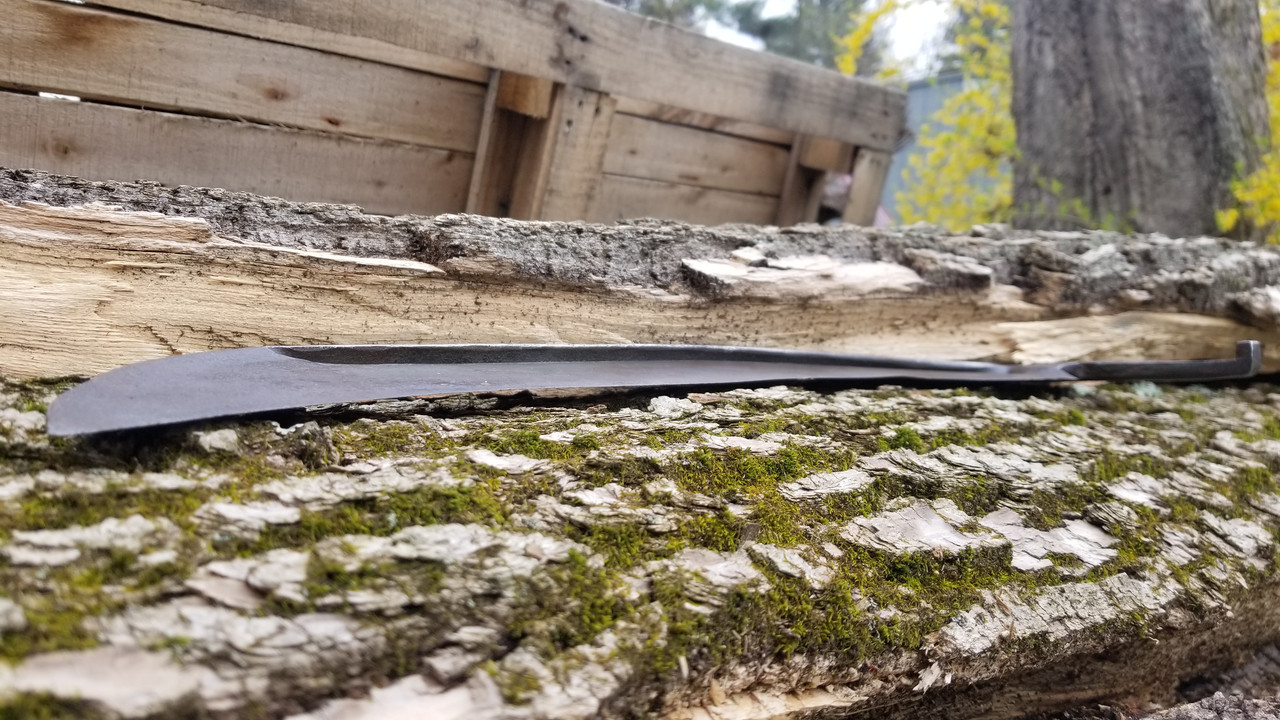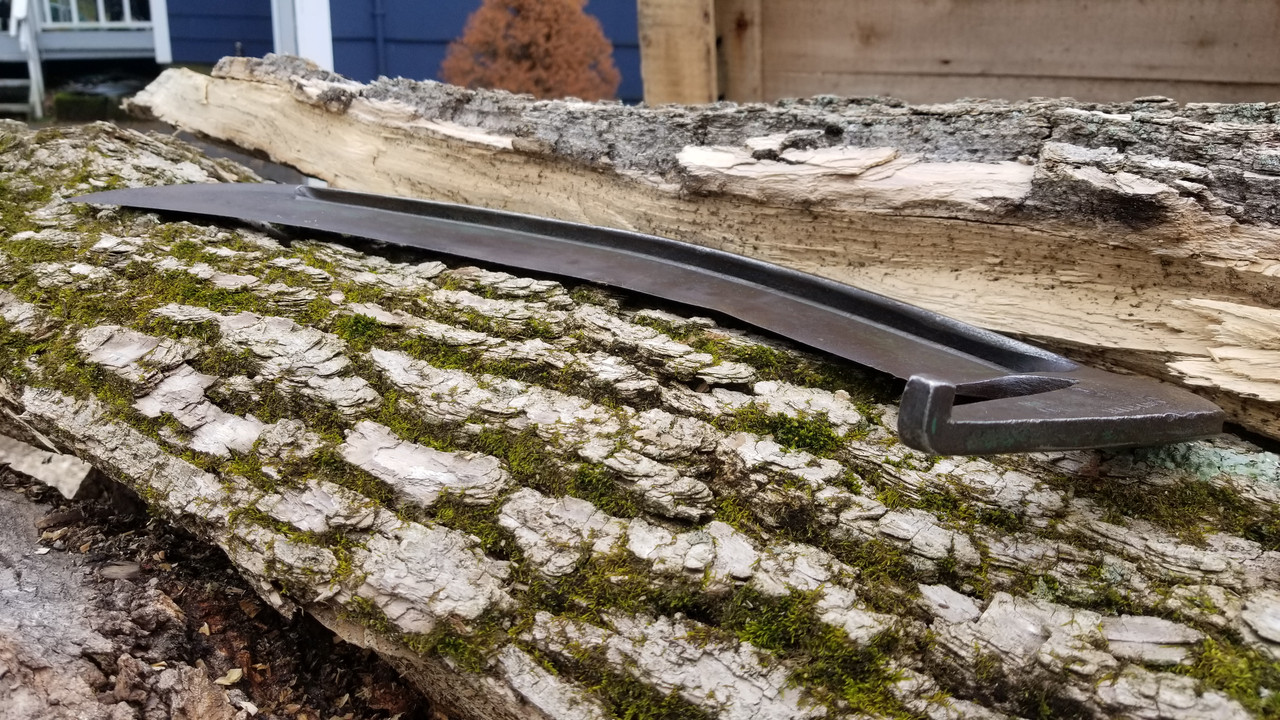Here's my lengthened SN-9 snath. I used it to cut a bit of lawn grass but, while now green, the grass hasn't really taken off yet this spring. Lacking grass, it's a good time to manicure the hay field however, so I switched over to clearing some nasty wild rose bushes from our pasture. The sturdy Seymour (modern Austrian) grass blade seems to be up to the task, even at 30 inches in length, and I haven't even fit-up my Arti 40 cm bush blade to try it yet.
I made the extension from a 1.5 square piece of oak lumber that I picked up at Home Depot. It was the only hardwood that I could find locally. Even after carefully centering it in my 4-jaw metal lathe chuck, it was barely large enough to fully turn to 1.5" of round. Then I turned down 4" on each end to match the 1.375" ID of the SN-9 tubing. There's 8" of straight section in my SN-9 snath so I made the cut with a tubing cutter right in the middle of it.) The length added to the snath is nearly 5-3/4 inches. I clamped angle iron to the lathe carriage to serve as a tool rest. Yeah--it would've been easier if I owned a wood lathe, but I'd rather turn wood on a metal lathe than try to turn metal on a wood lathe!

In the spirit of a DIY project and learning, I also made my own skew chisel from 10 mm x 14 mm rectangular HSS that I had on hand. I studied-up online about skew chisels (and skew runback and "catches", oh-my!) and it worked really well. Lacking a tool to turn a tool handle, I 3D printed my own handle in tough nylon. Everything went very well with no practice parts consumed even. I just chucked-up my expensive piece of Home Depot oak and went for it! Maybe I'll post pics of my homemade skew somewhere in the forums too.
The splice is currently secured with JB Weld only and, despite the shock of trimming wild rose bushes (even when slicing optimally, the tough stalks really jar the snath and arms, which is a whole different scything experience than slicing easily and smoothly through grass and other "salad" vegetation), and getting my blade stuck in the rose bushed on a few occasions, the extension joints have yet to loosen. If they ever start to slip, I'll drill the extension for through-bolts.
I used a long sanding drum/threaded "wrap" extension attachment on my die grinder to roughen the inside of the tubing and I fully de-greased it with denatured alcohol. I also rough-chiseled lengthwise channels in the oak around the perimeter of the engaging oak sections to create a mechanical lock with the epoxy (a trick from bedding plastic rifle stocks). I fully coated all surfaces of both sides of the joint with JB Weld using tongue depressor sticks before joining and clamping the three parts together. Two wood clamps were squeezed over the joints but I positioned them to lap over the seams too, which squeezes the 0.125 wall aluminum tubing imperceptibly and holds the oak splice well enough to hold everything together while the JB Welds sets up. Due to the viscous JB Weld-induced "hydraulic memory" after rotating and pushing the gummy parts together to fully and evenly squeeze out the epoxy during assembly, the clamps are necessary. I know people here disagree with me, but I'll be very surprised if I ever need those through bolts (and they can just as easily be installed later anyway)!
I'm very happy with the result. This scythe finally fits my 6' 1"+ height perfectly now. (Though of course I still had to bend the blade tang a little with heat, which as FortyTwoBlades has explained here, is by design)!


